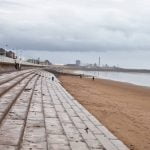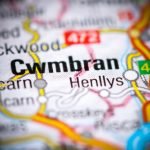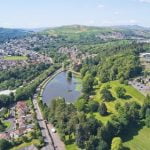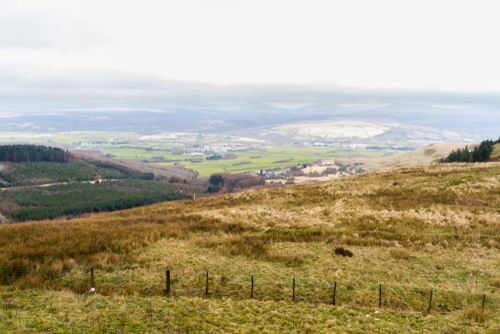
Neath (Castell-nedd in Welsh) is a town situated in the county borough of Neath Port Talbot, South Wales. The town is located on the River Neath some 7 miles (11 km) northeast of Swansea. At the 2011 UK Census, Neath had a recorded population of 19,258 with that of the wider urban area being 50,658.
A Fleeting History
There is evidence of some prehistoric settlement on the hills surrounding the town of Neath, which is most likely Celtic. The area immediately around the town was first settled around AD 70 by the Romans when they established the fort of Nido (or Nidum) at a crossing point of the River Neath. The Roman fort took its name from the Celtic word of ‘Nedd’, which is thought to have simply meant ‘river’. Eventually, the name ‘Nedd’ became anglicised to Neath, adopted for both the town and River on which it stands. The massive fort, which was built at current day Llantwit, is one of only nine known Roman sites in Wales. It is thought that the stronghold once accommodated many thousands of troops.
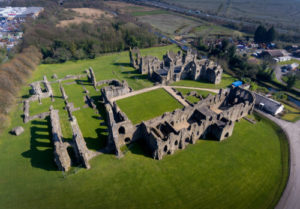
The ruins of Neath Abbey at Skewen
St Illtyd visited the Neath area in the 5th century. He established a settlement at the former Roman camp on the northern edge of the town, where the church of St Illtyd was eventually built. However, the real history of the town itself commences early in the 12th century, following the Norman Conquest of Glamorgan when both a castle and abbey were built at Neath.
In 1129 AD, Neath Abbey was established when Richard I de Grenville, Lord of Neath, donated 8,000 acres of his estate to an Order of Savigniac monks from western Normandy. By 1147, Neath Abbey had become a Cistercian house but was ransacked during the Welsh uprisings of the 13th century. Dissolution of the Monasteries by King Henry VIII bought about the end of the building’s monastic use by 1539. By 1600, the Abbey had been converted to a large Tudor mansion. However, by the end of the 17th century, the former Abbey had been abandoned.
Neath Castle
The original Neath Castle was a ‘motte and bailey’ timber structure, established by Richard I de Grenville sometime in the early 1100s. However, it was abandoned soon after the close by Neath Abbey had been constructed in 1129. However, soon after, a second castle was built on the opposite (East) bank of the River Neath, by Gilbert de Clare, 5th Earl of Gloucester. By the mid-12th century, a small village with a market began to develop, forming the beginnings of present-day Neath. During the early 13th century, the Norman stronghold was subject to persistent attacks by the Welsh, notably by Llywelyn the Great, who captured the castle in 1231. Following this event, it was substantially rebuilt by Richard de Clare, 6th Earl of Gloucester. By 1320, a bridge spanned the river at Neath, which resulted in better local connectivity and increased trade, as well as more regularly held markets.
However, Neath remained nothing more than a small settlement until Tudor times. It was during the 16th century that coal mining and copper smelting, in particular, began to grow in the area. In 1584, the town got its first waterwheel, built at the site of an existing waterfall on the River Dulais at Aberdulais. The resultant power output was put to great use in driving forward the local copper industry. During the 17th century, a small coalfield was developed by the Evans family of Eaglesbush. The coalfield was later purchased and further developed by the Mackworth family, who originating from Derbyshire, had bought the Gnoll Estate. By 1695, the Mackworths had constructed one of the largest and most up-to-date copper smelting works in the country at Melincryddan. With a cheap and ready supply of coal, vital for the copper industry, the town soon began to prosper. Neath, along with nearby Briton Ferry, quickly became industrialised, leading to the area becoming the major centre of employment in the region.
Industrial Neath
With the arrival of the Industrial Revolution in the 18th century, new industries in the town included the manufacture of iron, steel and tinplate. The locally renowned Mackworth family, who owned the Gnoll Estate, were foremost in the town’s industrial development. Coal was now being mined extensively in the surrounding valleys, which led to the construction of canals and railways around Neath, making the town a major transportation hub.
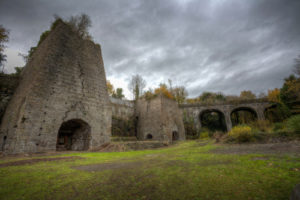
The remains of the old Ironworks at Neath Abbey
In 1795, the Neath Canal was opened from Glynneath to Melincryddan, and in 1799 extended to Giants Grave. Several small extensions resulted in the canal eventually reaching Briton Ferry, where the local Iron Works industry was concentrated. The canals had a big influence on industrial development, especially those with a dependence on coal. Brick-making and chemical production became established in the town, as well as iron manufacturing at Neath Abbey. However, by 1823, Neath’s population was still only around 3,000, which increased to 4,000 over the following 25 years.
The arrival of the steam railways contributed to both new job opportunities and local population growth with the South Wales Railway opening in 1850, and the Vale of Neath Railway in 1851. In the mid-19th century, an industrial area had already begun to develop at Melincryddan, when the Melyn forge and foundry was set up. In 1864, the Melyn tinplate works were opened, the Eaglesbush tinplate works in 1890, and the Neath Steel Sheet and Galvanizing Company in 1896.
Between 1897 and 1918, the local collieries produced over eight million tons of coal. However, production went into rapid decline during the 1920s, with the last pit closing down in 1929. The decline of coal was by and large brought about by a changing world and the subsequent rise of oil.
In 1922, an oil refinery at Llandarcy, near Skewen, was opened by the Anglo-Persian Oil Company Limited. It was the first large commercial oil refinery to be established in Britain, although a significant scale of operation did not occur until after WW2. Llandarcy was actually built as a model village to house a number of the company’s workforce, while the refinery itself was known as Skewen. At its peak in the early 1960s, Skewen was refining 8 million tons of oil per annum. The Anglo-Persian Oil Co. Ltd. later became the ‘British Petroleum Company Limited’, and today is simply known as ‘BP’, one of the world’s largest oil companies.
For all its industrial development, it was only during the 1920s and 1930s that Neath’s housing stock saw the introduction of electricity. Street lighting, which had been run on coal gas since the 1820s, was only converted to electric following the end of WW2 in 1945.
Modern Neath
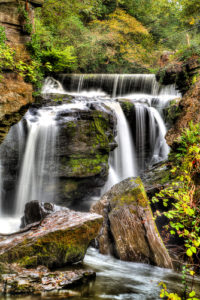
The Aberdulias Waterfalls
Neath, with its navigable estuary, was a functional river port until fairly recent times. However, the closing of the Llandarcy Oil Refinery (Skewen) in 1998, saw Neath’s heavy industries were all but gone. Today, the town is very much seen as a commercial and tourist centre. The local authority is very much committed to the continual investment of the development of tourist facilities and projects to increase the number of visitors to the Neath Port Talbot area. In particular, outdoor activities such as cycling, walking, and mountain biking are heavily promoted. The likes of Afan Country Park offer world-class mountain bike facilities. The Vale of Neath is also blessed with numerous waterfalls, which is a big attraction to walkers and ramblers.
The wider area of Neath Port Talbot still remains primarily industrial, being involved in the manufacture of steel, petrochemicals, and clothes, as well as the automotive industry. Neath having attracted commercial and residential development now very much serves as a commuter base for Port Talbot and neighbouring Swansea.
Getting To Neath
By Road
Neath is well connected to the rest of the UK via the M4 Motorway, giving direct access from London and the Southeast of England. The A465, which skirts the town to the northeast, provides the main link from the Midlands and the M50, M5 and M6 give connectivity from the North.
By Rail
Head for Neath railway station which lies on the South Wales Main Line. Great Western Railway and Transport for Wales operate westbound services to Swansea, Carmarthen and the West Wales Line and eastbound to Port Talbot Parkway, Bridgend, Cardiff Central and London Paddington. Trains also run to Crewe and Manchester Piccadilly via Hereford and Shrewsbury.
By Bus
The Local bus station is at Victoria Gardens, a five-minute walk from the railway station. National Express services call at the railway station. From Victoria Gardens, First Cymru provides direct inter-urban services to nearby Swansea and Port Talbot in addition to South Wales Transport which provides many similar local services.
By Air
Neath is served by the major airports of Bristol (80 miles) and Cardiff (38 miles), from which there are excellent train and bus links.
Things to see and do!
- Gnoll Estate Country Park – set in 240 acres of woodland and wide-open spaces, there’s an adventure park, children’s playground and a 9-hole pitch and putt golf course. There’s also an opportunity to do activities such as orienteering and fishing ponds.
- Aberdulais Tinworks and Waterfall – run by the National Trust, is an interactive tin mine heritage museum with a fairly spectacular waterfall. There’s also the old waterwheel that originally powered the mine. The obligatory coffee and gift shops are on site.
- Neath Abbey – founded in 1129, the remaining structure is a fairly substantial and impressive set of ruins. There are information points that provide background and details of abbey life at the site. Free to enter!
- Neath Castle – a Norman castle located in the town centre it was constructed by the 5th Earl of Gloucester sometime during the early 12th century.
- Gorge Walking (Wales) – based in Neath, gorge walking is a high adrenaline activity involving climbing, abseiling, jumping, and generally scrambling around in fast-flowing river gorges.
- Aberavon Beach – about 4 miles from Neath, you’ll find a beachfront with a cinema, leisure centre, crazy golf, fish and chip shops, restaurant and cafes, adventure play areas, skating park, cycle path, RNLI lifeboat centre, and a long stretch of clean beach, that has a great view over Swansea Bay.
- Margam Castle – large Victorian country house, designed in a Tudor Gothic style by prominent architect Thomas Hopper. Built in 1840, it’s a Grade I listed building, owned by Neath Port Talbot Borough Council.
- Afan Country Park – with its fantastic landscape is a mecca for mountain bikers, cyclists and walkers
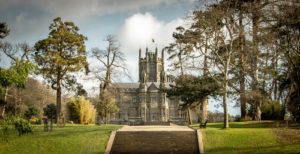
An impressive Victorian country house – Margam Castle
A Famed Son
On the 10th November 1925, Richard Burton, the world-renowned Welsh actor of stage and screen was born at Pontrhydfen. The small village, situated in the Afan Valley, is just 3.5 miles from Neath. Burton earned seven Oscar nominations during his acting career but is equally as famous for his two tempestuous marriages to legendary Hollywood actress, Elizabeth Taylor. Five times married Burton died at his home near Geneva, Switzerland on 5 August 1984, aged just 58 years old. His life as an alcoholic and heavy smoker is largely attributed to his premature death.
Where to stay?
With Neath being relatively small, accommodation in the town itself is fairly limited. Obviously, the choice of accommodation increases the further afield you are prepared to stay. A broad indication of prices for available accommodation in and around the Neath area, based on 2 people sharing or as indicated, is:
B & B/Guesthouses/Standard Hotels: £40 – £70
3/4/5 Star Hotels: £70 – £150
Holiday Home/Apartments: £130 – £200 (between 2 & 6 adults sharing)
Other Useful Links
https://www.npt.gov.uk/ Council Website
